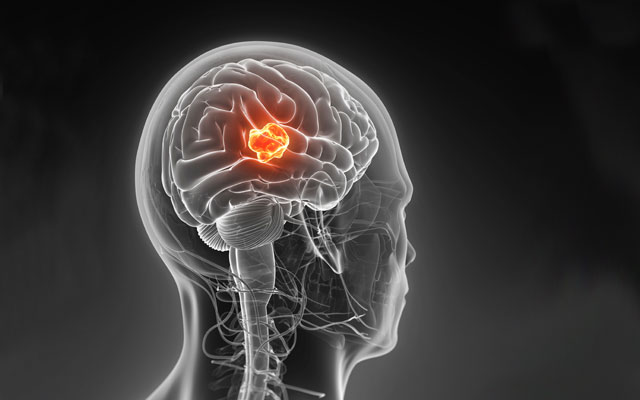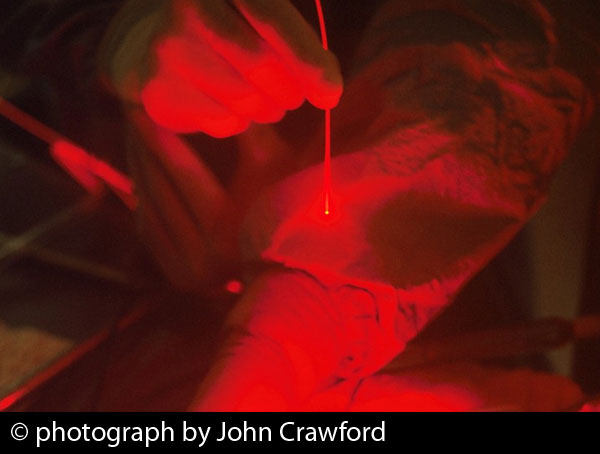Angiogenesis Antidote: New Angle on Cancer and Eye Diseases
Angiogenesis, the process of new blood vessel formation, is essential for tumor growth and progression, and blocking this process has emerged as an attractive approach to cancer therapy. Many anti-angiogenic drugs have been identified that show activity against a variety of cancers. Some of these agents also appear to enhance other treatments such as radiotherapy and chemotherapy. At the same time, anti-angiogenic drugs have been useful for other diseases such as age-related macular degeneration, the number one cause of blindness in Europe and North America.
Photodynamic therapy (PDT), the activation of a photosensitizer using laser or visible light, has been used for both cancer and age-related macular degeneration. In the realm of cancer, PDT has been successful in the treatment of primary and metastatic tumors of the skin, brain, lung, head and neck, esophagus, biliary tree, pelvis and various gynecologic tumors, as comprehensively summarized in the January 2014 issue of Future Oncology.
PDT’s ability to help people diagnosed with these conditions could be further improved with the addition of anti-angiogenic drugs. This is due to a logical coupling between PDT and angiogenesis inhibition. A side effect of PDT is to act as an “angiogenic switch” that ultimately leads to new blood vessel formation. Excessive levels of various angiogenic factors have been measured in the blood following PDT. Recent studies suggest that combining angiogenesis-inhibiting drugs with PDT may offer an effective therapeutic strategy for cancer.
Dutch Researchers Shed Light
To test this possibility, cancer researchers from the Angiogenesis Laboratory at VU Medical Center in Amsterdam (The Netherlands) teamed up with the Medical Photonics Group at the Swiss Federal Institute of Technology in Lausanne, Switzerland.
In their laboratory study, the Dutch and Swiss researchers used two tumor models to test the effects of three clinically approved anti-angiogenic drugs (sunitinib, sorafenib and axitinib) in combination with PDT, as well as the better known drug, bevacizumab (Avastin). The best treatment results were obtained from the combination of PDT and low doses of either axitinib or sorafenib. These data indicated that there may be a future for these anti-angiogenic agents as additions to PDT for cancer therapy.
As mentioned above, age-related macular degeneration is another disease that has benefited from treatment with PDT. However, a 2014 scientific paper published in the journal Molecular Vision explores the possibility that PDT’s impact on angiogenesis may be a two-edged sword. On one hand, it impedes a process called “choroidal neovascularization”, which helps explain part of PDT’s effectiveness against age-related macular degeneration. On the other hand, PDT may stimulate angiogenesis by creating a low-oxygen environment along with reactive oxygen species, and this forces the need for repeat PDT treatments.
The researchers propose that “it may be timely to consider treatments that facilitate vascular maturation, rather than its arrest or destruction.” One possibility is to use hyperbaric oxygen therapy (pressurized oxygen) to bring more oxygen into the area for optimal repair of the neurosensory retina. Well-designed clinical and laboratory experiments will be needed to test this hypothesis.
Support us by buying our book, The Medicine of Light, and ebooks from our Photoimmune Discoveries eBook Series.
Sources
Allison RR. Photodynamic therapy: oncologic horizons. Future Oncol. 2014 Jan;10(1):123-4
Weiss A, van Beijnum JR, Bonvin D, Jichlinski P, Dyson PJ, Griffioen AW, Nowak-Sliwinska P. Low-dose angiostatic tyrosine kinase inhibitors improve photodynamic therapy for cancer: lack of vascular normalization. J Cell Mol Med. 2014 Jan 22. [Epub ahead of print]
Kent DL. Age-related macular degeneration: Beyond anti-angiogenesis. Mol Vis. 2014 Jan 6;20:46-55.
© Copyright 2014, Photoimmune Discoveries, BV
Related Posts
-
 Peri-Implant Disease and the Promise of PDT
No Comments | Jul 30, 2014
Peri-Implant Disease and the Promise of PDT
No Comments | Jul 30, 2014 -
 Lighting Up Brain Tumors the Photodynamic Way
No Comments | Oct 23, 2014
Lighting Up Brain Tumors the Photodynamic Way
No Comments | Oct 23, 2014 -
 New Light on Deadly Liver Metastases
No Comments | Feb 2, 2016
New Light on Deadly Liver Metastases
No Comments | Feb 2, 2016 -
 Periodontitis: Moving Beyond Antibiotics for Dental Disease
No Comments | Nov 5, 2013
Periodontitis: Moving Beyond Antibiotics for Dental Disease
No Comments | Nov 5, 2013

 English
English Français
Français Deutsch
Deutsch Nederlands
Nederlands